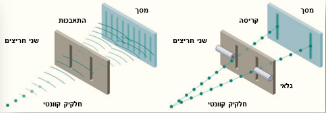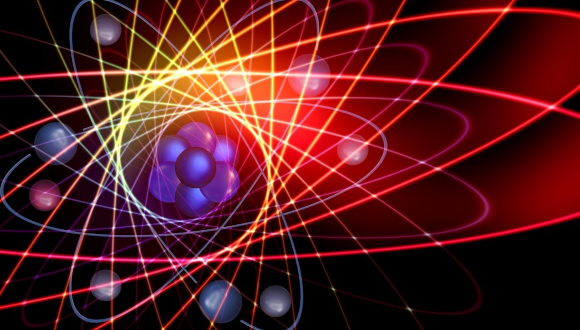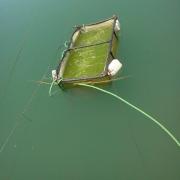Quantum mechanics affects light emission
Researchers from The Faculty of Engineering, TAU University, the Technion and MIT shed new light on quantum mechanics
Researchers from The Faculty of Engineering, TAU University, the Technion and MIT shed new light on quantum mechanics
A new series of studies led by researchers from Tel Aviv University, the Technion and MIT has found that some properties of light waves emitted from particles depend on the wave properties of the emitting particles. In other words: quantum mechanics influence the process of light emission. The studies were led by Prof. Ady Arie, Incumbent of the Marko and Lucie Chaoul Chair in Nano-Photonics at Tel Aviv University and Prof. Ido Kaminer from the Technion's Faculty of Electrical and Computer Engineering. The researchers demonstrated how light waves change, depending on the quantum properties of the particles emitting them, and that this light emission can be interpreted as the manifestation of a counter-intuitive quantum phenomenon: the collapse of the wavefunction. A direct connection was found between light emission and quantum entanglement – the property at the core of quantum encryption and computation technologies.
The researchers explain: "Imagine that you are looking at a water wave striking a breakwater with two slits, so that two new waves, each emerging from one of the slits, are formed at the other side. Looking closely at the new waves you will notice that at some points they are higher than the original wave– while in other places they are lower. This phenomenon is called wave interference: the two waves add up at certain points and cancel each other at other points. Now, imagine tennis balls thrown at a wall with two slits. Clearly, some of the balls will go through one slit, and some through the other. But the balls will not add up or cancel each other, like waves do.
In contrast, quantum mechanics – the theory describing the properties of tiny particles – claims that such particles can sometimes behave like waves. If we perform the two-slit experiment with quantum particles, we will see that the quantum particle is capable of passing through both slits in the wall simultaneously. In this experiment, we will observe an interference pattern consisting of alternating strips: bright strips where the particles have hit the screen, and dark strips where they did not. The brightness of these lines is very similar to the height of the water waves after hitting the two-slit breakwater. However, there is a substantial difference between the water waves and the particle waves of quantum mechanics. If we try to watch one of the slits through which the quantum particle passes, the stripe pattern on the screen will vanish. By merely watching the particle's location in one of the slits we ensure that it will actually pass through this slit: suddenly, the quantum particle behaves like the tennis ball. This strange phenomenon goes by the name of "the wavefunction collapse".

the two-slit experiment with a quantum particle.
Despite our tremendous advancement in understanding quantum mechanics, we still find alleged contradictions between this theory and classical physics. For example, in classical physics it is possible to determine the trajectory and velocity of a light-emitting particle and from these data predict the characteristics of the emitted light. In contrast, in quantum mechanics it is impossible to determine both the position and velocity of a particle simultaneously (this is the famous Heisenberg's uncertainty principle). In addition, quantum particles have wave properties, which change when the particles are being 'watched' (the wave function collapse).
A series of studies led by researchers from Tel Aviv University, the Technion and MIT has demonstrated how these properties of quantum mechanics affect the way particles emit light. The researchers demonstrated that many phenomena related to light emission, which have been explain in the same manner for the past century, can actually behave very differently than expected. This is due to the influence of the quantum nature of the particles on the light emitted from them.
In their first study in 2019, the researchers tried to measure the interference of light waves emitted from an electron beam (quantum subatomic particles that carry electric charges). The study, co-led by Dr. Roei Remez and PhD student Aviv Karnieli from the labs of Prof. Ady Arie at Tel Aviv University, and Prof. Ido Kaminer at the Technion, was published in the prestigious journal Physical Review Letters. Dr. Sivan Trajtenberg-Mills, Master's student Niv Shapira and Dr. Yossi Lereah from Tel Aviv University also participated in the study. In their experiment, the researchers showed that the expected interference of the emitted light is not observed. Using quantum mechanics to describe their results, they found that it predicts an effect very similar to the wavefunction collapse. At the moment of light emission, the electron's wavefunction collapses to a specific point in space, as if someone was 'watching' the electron at that exact position. Therefore, the light is no longer emitted from different points simultaneously, and the interference of the light waves disappears.

Light emission in quantum physics (right) vs. classical physics. Under certain conditions, the shockwave does not form in the quantum case.
A follow-up study recently published in the prestigious journal Science Advances showed that the interference capability of light waves in time, which is responsible for the generation of very short and intense light waves (pulses), can also disappear due to Heisenberg's uncertainty principle. The new study, led by PhD student Aviv Karnieli from the labs of Prof. Arie and Prof. Kaminer, was conducted in collaboration with PhD student Nicholas Rivera from MIT, USA. The researchers demonstrated theoretically the disappearance of light interference using another effect, called Cherenkov radiation – usually explained by using an analogy to jet planes surpassing the speed of sound in air and creating a 'sonic boom', also known as a shockwave. Similarly, in the Cherenkov effect, a particle exceeding the speed of light inside a transparent material should create a shockwave - an 'optic boom'. The researchers' surprising new discovery indicates, however, that Cherenkov radiation is not a shockwave after all – unlike the way it has been perceived by scientists since its discovery in 1934. The analogy between the jet plane and the quantum particle is incorrect: only under certain conditions – depending on the uncertainty properties of the quantum particle emitting the light – would the radiation create a shockwave.

Left to right: Dr. Roei Remez, Aviv Karnieli, Prof. Ady Arie, Nicholas Rivera and Prof. Ido Kaminer
Finally, in another study also published recently in Physical Review Letters, led by Aviv Karnieli, Prof. Arie, Prof. Kaminer and Nicholas Rivera, the researchers were able to demonstrate that when light is emitted simultaneously from two electrons, the quantum properties of the electrons can dramatically affect the emitted light. For example, two paired electrons that are 'quantum-entangled' – namely, possessing a probabilistic quantum relation between them, which is at the heart of quantum technologies such as quantum cryptography and computing – will, under certain circumstances, emit light waves simultaneously, generating an interference pattern that is directly dependent on how the electrons are entangled. In this manner, claim the researchers, observing the light emitted from entangled particles could indicate the amount of entanglement between them, without the need to measure them directly. This possibility may prove important for future uses of electrons as carriers of quantum information.
Loving the problem is the greatest way to invent






